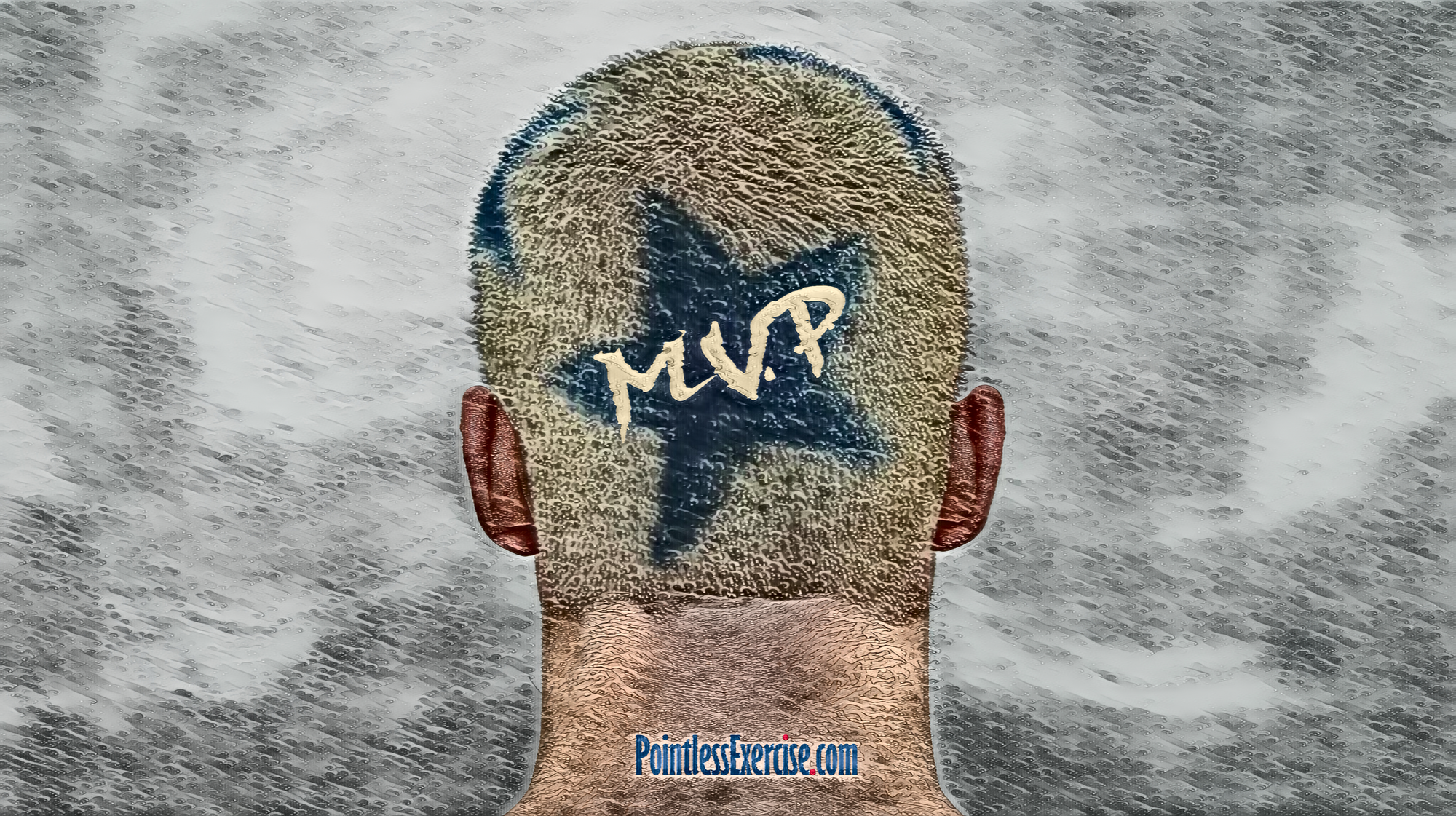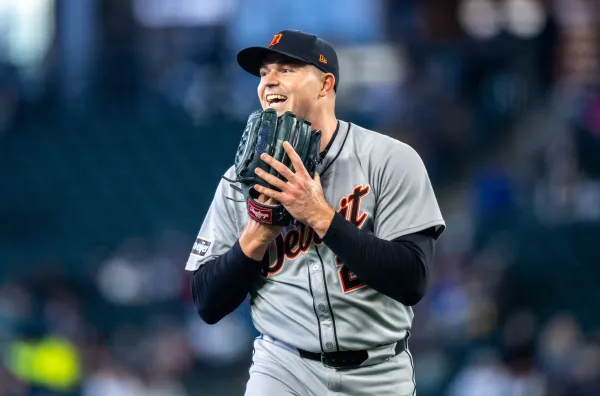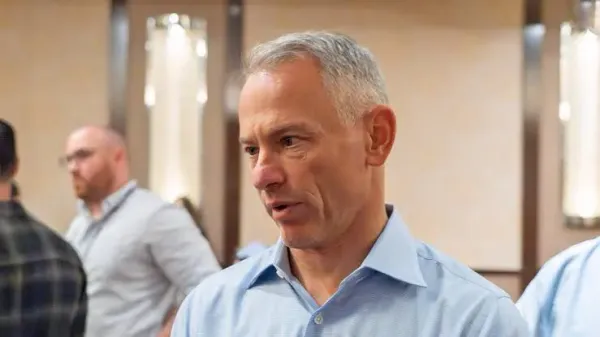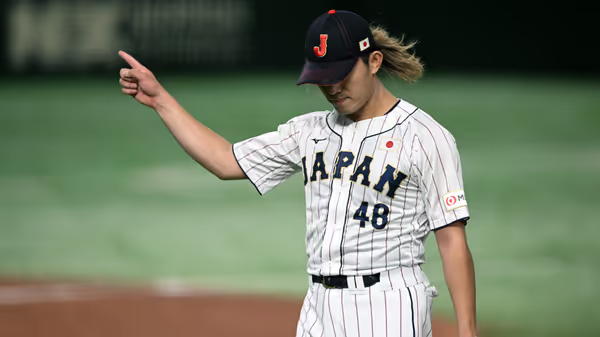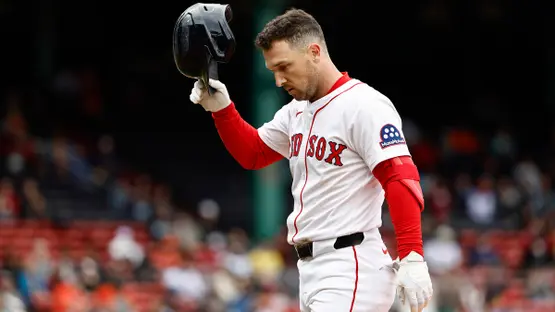Petecrow's ascendence should make signing Kyle Tucker easier for the Cubs
But then, when do Jed or Tom do anything the easy way?
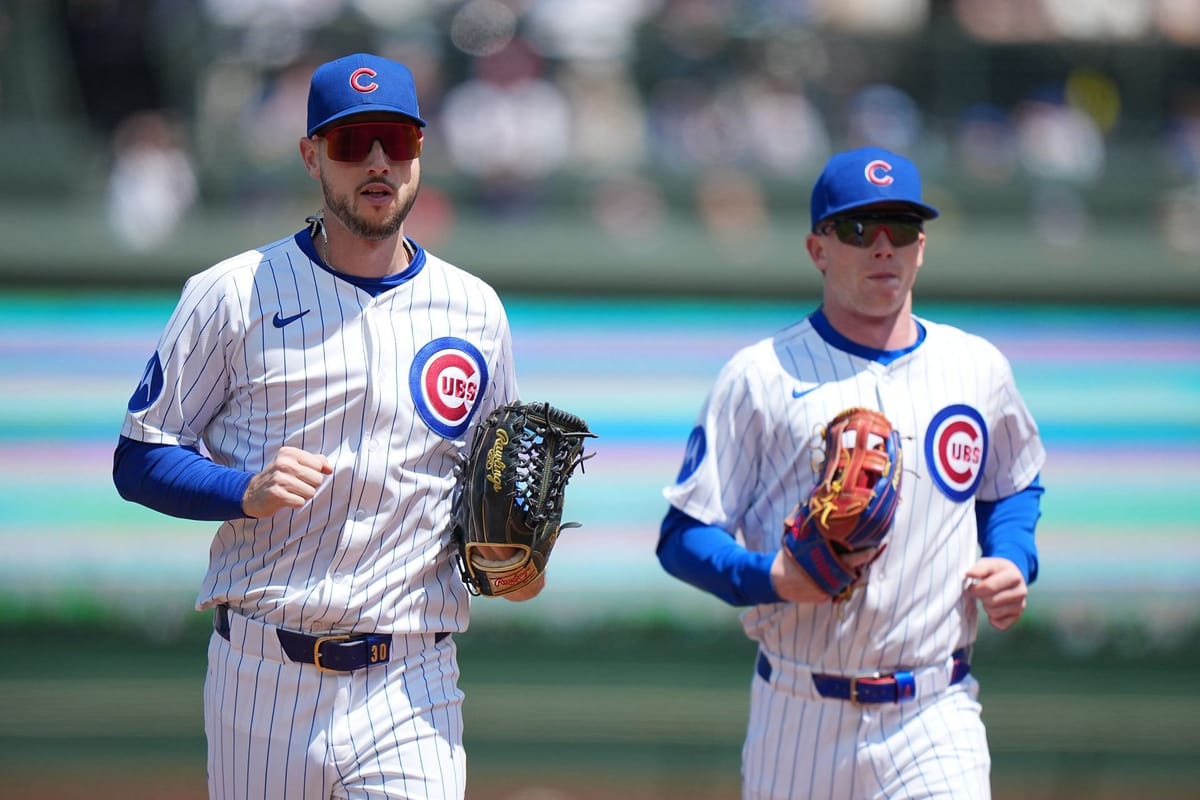
Anybody who pays even casual attention to the NFL has heard some expert bloviating on and on about how teams with a hot shot rookie quarterback need to build a team around him quickly while he's still "cheap." The Kansas City Chiefs are a great example of this. They went to three Super Bowls with Patrick Mahomes on his rookie deal and were able to throw big money at their best players to keep them and to go out and get pieces that they needed.
Now that Mahomes is being paid (deservedly) the GDP of Luxembourg, it's harder for the Chiefs to fill in the team around him, but he's Patrick Mahomes and he just finds a way to make this work.
The Bears are currently trying to do the same thing with Caleb Williams. They showed an alarming lack of urgency in his first season with the team, signaled by not bothering to hire a real coach and instead giving the old one a new haircut, and by not fixing their offensive line. But this year, they have thrown caution to the wind and hired the guy everybody wanted them as head coach to pair with Caleb and by using trades, a second round draft pick and free agent money to try to fix the o-line once and for all.
So, what does this have to do with the Cubs? It doesn't have anything to do with them, does it? I just forgot I was writing a Cubs column for today and started on the Bears, right?
Wrong.
This has everything to do with the Cubs. Because they have baseball's equivalent of a budding start quarterback on a rookie deal. They have a young, underpaid superstar. And they also have one of baseball's best overall players lining up next to him every day and they need to figure out how to pay him.
No, not Ian Happ. The other side.
If the Cubs were a big market team who acted like one, I'm not sure we'd even be worried about them re-signing Kyle Tucker. They have a ton of built in advantages to keep him. They have a pile of money that they don't do anything with other than watch Todd Ricketts crash his bike into it for fun. They are located in a world class city where players like to play. They play in front of crazed, mostly positive fans who have already taken Kyle in like one of their own. Even the survey The Athletic did where they asked players about where they'd most like to play and what managers they'd like to play for were very high on the Cubs, Wrigley Field and Craig Counsell.
In other words, as long as they offer a bag at least as big as any other team this offseason, Kyle Tucker's going to be tormenting NL Central pitching for the next decade.
But that's where the worry comes in. Tom Ricketts' main hobby seems to be doing biannual interviews where he tries to publicly position the Cubs as this little family owned business that can barely keep the lights on. In fact, maybe they need to go back to "the good old days" and just play day games at Wrigley?
The reality of course is that the moms and pops that make up the Ricketts' family are worth, conservatively, $4.1 billion dollars, and despite the "biblical losses" that Tom still laments from the Covid year, the arrow on their net worth seemed to wipe out those losses and then some the very next year and keeps on going up.

There was a little blip in 2023 when Joe Ricketts bought a town in Montana. An entire town. But sure, they can't afford a right fielder.
If the Cubs don't re-sign Kyle Tucker, it won't be because they can't, it will be because they decided they didn't want to.
And, even for them it would be a curious decision. Because the cost to get Tucker wasn't nothing. Isaac Paredes is having a very good year for the Astros (though it's currently being interrupted by a bad hammy), Hayden Wesneski is also on the IL but given the current state of the Cubs' pitching staff he would have been handy to have around this year, oh and yeah, they traded last year's number one pick, Cam Smith who shockingly broke with the Astros right out of Spring Training despite playing just five games, ever, above class-A ball, never playing the outfield before and expectedly struggling early in the season, is now more than holding his own.
On the season Smith's hitting a more than respectable .265/.337/.402 with seven homers and 27 RBI, but over the last 15 days he's hitting .327/.375/.519.
And, even if none of the guys they traded was playing well, the knock on effect of having Tucker in the Cubs lineup would be more than enough proof of his impact.
He's the best hitter on the team, and his performance so far has done nothing to cast any doubt on that fact. He's slashing .291/.399/.518 with 16 homers, 49 RBI and 19 stolen bases in 20 tries. And his presence in the lineup has made life easier for the Cubs other slugger, Seiya Suzuki who is putting together the best slugging season of his four year MLB career. Seiya came into the season with a solid career slug of .470. This year it's .535 and he already has 21 homers and 67 RBI. His career highs are 21 and 74. He's going to obliterate those.
And then, there's the incredible breakout of Petecrow Armstrong. After a super hot August last year tantalized us with what the kid can do when he puts it altogether, he's going on about three straight months of it now. He's already hit 21 homers, stolen 23 bases, he's driven in 61 runs, he's the best defensive player in the game, and he's going to start the All-Star Game right next to Tucker in the NL outfield.
I'm not saying that without Kyle Tucker around, that Petecrow wouldn't have blossomed like this eventually. It was inevitable. He's just too talented not to. But I don't think it's crazy to think that the stabilizing force of adding one of the five best hitters in baseball has sped up Pete's development.
When the Cubs offense is clicking, like it was for much of April and May, they score runs in bunches. No team has scored 10 or more runs in a game more than the Cubs have. But, too many of the Cubs everyday starters are notoriously streaky, like Happ, Michael Busch and Dansby Swanson in particular. Tucker just hits. He cools a little from time to time, but he never goes cold. The other guys can all fall off the map for weeks at a time.
Take him out of the offense and they go right back to being the 2023 and 2024 Cubs, and that was no fun for anybody.
Signing Tucker will be expensive. He's one of the best players in the game and he deserves to be paid like it. Somebody's going to do it. It might as well be the Cubs.
And the timing works out to be just perfect.
Why?
Jed Hoyer loves to brag that the Cubs "don't have any bad contracts." Well, he's mostly right. They're still going to be paying Dansby $26 million in 2029. But I know what Jed means. Dansby's overpaid, but he's a good player, especially on defense. And the Cubs are a big market team, so it should be fine.
The reason the Cubs don't have any (other) bad contracts is because Jed hasn't been bold in trying to sign anybody. It's easy to give short-term extensions to guys like Happ and Nico Hoerner who are both useful players, but nobody's idea of a star. The best deal Jed has done to date is the one for Shōta. Most teams saw Shōta as the consolation prize for teams who really wanted Yoshinobu Yamamoto. The Cubs saw him as more and they've been proven completely right.
Shōta's deal is pretty unique. The Cubs paid a $10 million posting fee to the Yokohama Bay Stars to sign him, and then the initial structure of the deal was four-years, $53 million. But the Cubs left themselves flexibility. If Shōta was just kind of good they could decline an option after this season and Shōta would then have a $15 million player option for next year, after which the Cubs have a second crack at an option, and could keep him through 2028 for a total of $42 million for the two year, or if they decline that, Shōta could exercise another player option for $15 million and then become a free agent after 2027. Got it?
But, Shōta proved to be very good, and so the Cubs can instead pick up an option this year that will instead keep him through 2028 for $57 million, bringing the total value of his deal to five years, $80 million, which now looks like a steal.
The Cubs have an incredible amount of payroll flexibility the next several years. The only players with guaranteed money for 2026 are Dansby ($28M), Seiya ($19M), Jameson Taillon ($18M), Happ ($19M), Matt Boyd ($17M), Nico ($12M), Carson Kelly ($5M) and Colin Rea has a team option for $6M or they buy him out for $750K. Just eight guys. They are also paying the Yankees $2.5 million for taking Cody Bellinger. Whatever.
But it gets even more flexible after that.
The only players with guaranteed contracts for 2027 are Dansby ($28M), Boyd has a mutual option for $15M or the Cubs can buy him out for $2M, and Kelly has a mutual option for $7.5 million or the Cubs buy him out for $1.5 million.
That's it.
In 2028 and 2029 it's just Dansby at $27M and $26M.
If the Cubs won't throw huge money at a proven star like Tucker with that kind of clean slate on their books, they might as well fold the franchise. The runway is completely clear.
And here's where a savvy organization would look at Petecrow and Tucker as a package. Because they are your two best players and they are at opposite ends of the payroll scale.
What should Tucker command in a deal? Currently the four highest paid players in terms of average salary are Shohei Ohtani ($70M), Juan Soto ($46.9M), Zack Wheeler ($42M) and Aaron Judge and Jacob deGrom are both at ($40M).
Vladimir Guerrero Jr's deal is for 14 years, so his average is only $35.7M.
The last I checked, Tucker doesn't pitch and hit and doesn't bring in extra revenue from being the most popular athlete on another continent, so we can set aside Shohei's AAV. And while Tucker's overall production is close to Juan Soto's, Juan is two years younger and since those are two extra prime years, that matters a lot.
Tucker deserves to be the third highest paid hitter in baseball. So how about 10 years, $440 million? Tom Ricketts just passed out.
There are lots of ways to structure the deal. The Blue Jays 14 year, $500 million deal for Vlad Jr. is technically 14 years, $175 million with a $325 million signing bonus. They did that for tax reasons for Vlad. Because the signing bonus would only be taxed in Toronto, while a player's annual salary is actually taxed based on how many games they play in what states during the season.
Shohei's deal famously includes $680 million in deferred money paid out $68 million a year from 2034 to 2043 when he will be living in somewhere other than California and not paying their state taxes on it. Baseball does not treat Shohei's deal as a 10 year, $20 million contract. But the formula they use to determine the luxury tax value of the deal saves the Dodgers about $24 million a year, allowing them to sign every free agent pitcher (and subsequently injure them).
Tom and Jed have both complained about deferred money, and it's just so Omaha of the Ricketts to not use it to their advantage. So for the sake of this, let's assume a Tucker deal will have no deferred money in it.
And that's where we get to Petecrow.
He's a star now. Like Corbin Carroll two years ago and Jackson Merrill last year, he has arrived, and a smart franchise would lock him up right now to both give themselves cost certainty, buy out his arb years and a year or two of free agency and reward him with a big pile of cash for becoming a great player.
The D'bags signed Carroll to an eight-year $111 million deal two years ago, and he's having another MVP caliber season for them (though he just broke a bone in his hand) at just $10.6 million this year. His deal averages $13.9 million. The D'bags can buy out Corbin's final year of the deal ($28.6M in 2031) for $5 million and make him a free agent.
The Padres signed Merrill to a nine-year, $135 million deal. He currently has an .829 OPS+ for them at age 22 for just $2.1 million this year. His deal will average $15 million per season over the life of it. The final year of Jackson's deal is a team option for $21.1 million in 2035.
The Cubs tried to sign Petecrow early this season to a deal believed to have been eight years, $75 million. He was struggling at the plate, but turned it down, and then almost immediately got hot as shit and took off. The news of the declined offer came out the day before Petecrow's two-homer Sunday Night Baseball game against the Dodgers in front of his parents in LA.
Nice try, Jed. But the cost just went way up.
How about eight years, $126 million? You buy all of Pete's arbitration years, and two years of free agency. You could even try to make the final year (2034) a team option. See if he goes for that.
If you structure it to mimic Merrill and Carroll's Pete would make $3 million in 2026, $8 million in 2027, $10 million in 2028, $12 million in 2029 and $23.2 million from 2030-2034.
And, you structure Tucker's in reverse.
Kyle gets $50 million a year for the first four years. That means the combined cost of your two MVP caliber outfielders is $52M, $58M, $60M, and $62 million those years. If you let Tucker go, you're going to end up panic buying two (or more) inferior players (or worse, giving Happ a ludicrous extension) and it will cost you as much or more to try to replace him in the aggregate. Averaging at most $31 million for two stars over that time period is a pretty good return on investment.
Then, as Petecrow's annual salary grows, your Tucker salary goes down. They combine to make $69.2 million in 2030 and 2031, then only $63.2 million in 2032 and 2033. In 2034 they combine to make $57.2 and then Petecrow's a free agent at 31, and Tucker makes $32 million as a 39 year old DH.
The most you ever pay the two of them combined in one season is $69.2 million and that's in 2030 and 2031, when I guarantee you neither of them will be the highest paid player on your team.
Think I'm crazy? The Cubs shit their pants when Bryce Harper signed that 13 year, $330 million deal in 2019. Not only is he currently the fourth highest paid Phillie, he wouldn't even be the highest paid Cub.
The reason it's worth it to pay stars like Harper or Aaron Judge or Shohei, or Soto or Tucker is that salaries around the league go up not down. You let them go and they leave a big hole in your lineup that you have to go out and find guys to fill and you end up overpaying multiple lesser players to try to fill that hole and replace that lost production.
You do these deals, and your 2027 outfield is Tucker in left, PCA in center and a league minimum rookie in left.
You don't do this, and your 2027 is PCA in center, some 1.5 WAR 30 year old free agent you had to pay $20 million a year to play right, and Ian Happ at 32 years old on the first year of a three-year $80 million extension you really didn't want to have to give him. And you won't get as much production out of that outfield as you'd get out of PCA, Tucker and the rookie.
You have a cost controlled star on your team right now. Use that advantage to keep the decidedly not cost controlled (but worth it) star you just traded for.
It's not that fucking hard to figure it out.
Hell, I just did.

